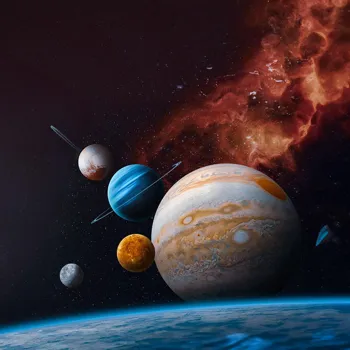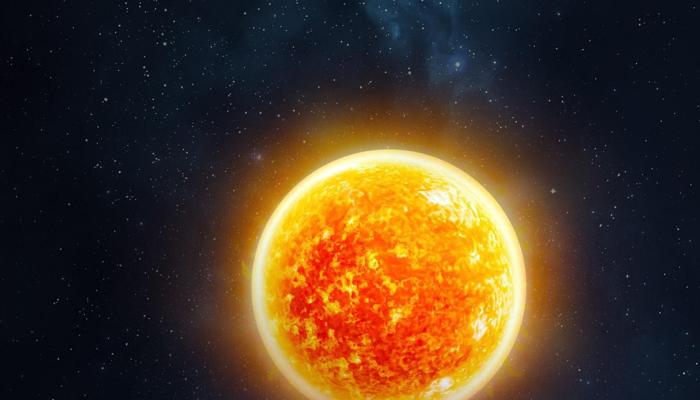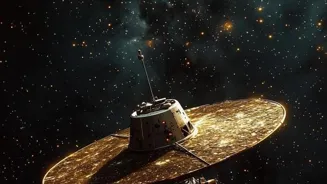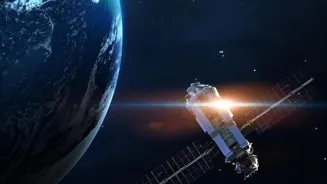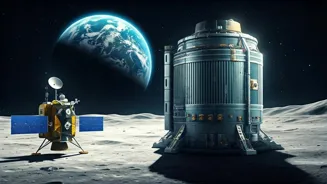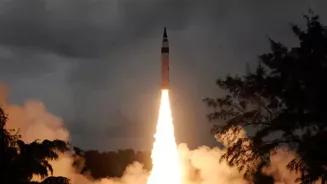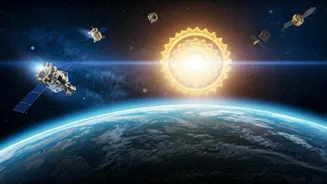Unveiling the Secrets of Planetary Atmospheres: Dive into the World Beyond Our Skies. Find out why it matters!
In aam junta terms, space missions are much more than just sending rockets up in the air. They're
like cosmic detectives, helping us solve mysteries about the planets in our solar system and beyond.
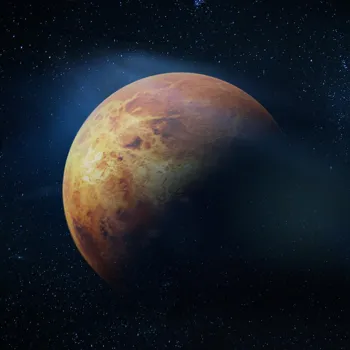
One of the biggest questions these missions tackle is understanding planetary atmospheres – the layers of gases surrounding these celestial bodies. Why is this important, you ask?
Well, these atmospheres are the key to understanding so much about a planet, from its weather and climate to its potential for harbouring life. Think of it like this: imagine trying to understand a person without knowing anything about their background or environment.
The atmosphere is a planet's background story, its environment rolled into one gaseous package.
Studying planetary atmospheres reveals insights on Earth's uniqueness and life support
Understanding planetary atmospheres helps us address some fundamental questions. What makes Earth’s atmosphere so special and supportive of life? Are there other planets with similar atmospheres that could potentially support life?
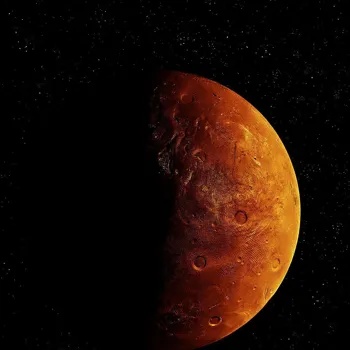
How do atmospheres change over time, and what factors influence these changes? By studying the atmospheres of other planets, we can gain a better understanding of our own atmosphere and the factors that support life on Earth.
We can see how different conditions on other planets could lead to completely different atmospheric compositions and climates. This allows us to appreciate the delicate balance of our own atmosphere and potentially learn how to protect it from harmful changes.
Space missions offer detailed insights into planetary atmospheres
Space missions give us a close-up view of these atmospheres that ground-based telescopes simply can't provide. Telescopes are good, but they are like viewing the world through a keyhole.

Spacecraft can fly directly through atmospheres, collecting samples and using instruments to analyze their composition, temperature, pressure, and other properties. This gives us much more detailed and accurate information.
For example, the NASA's Curiosity rover on Mars has been sending back data about the Martian atmosphere for years, including information about the presence of methane, a gas that could potentially be produced by living organisms.
Space missions refine climate models for Earth's future challenges
Space missions help us improve our climate models. By studying planetary atmospheres, we can test and refine our climate models, making them more accurate and reliable. This is important because climate models are used to predict future climate change on Earth.

The more accurate our models are, the better prepared we can be for the challenges of climate change.
For example, studying the runaway greenhouse effect on Venus, where its thick atmosphere traps excessive heat, can help us understand the potential consequences of rising greenhouse gas emissions on Earth.
Understanding factors driving atmospheric loss, like what transpired on Mars, can offer us insights into preserving our own atmosphere.
India's ISRO studies planetary atmospheres, excels in space exploration
India's space programme, led by ISRO, has also been making significant strides in studying planetary atmospheres. The Chandrayaan missions to the Moon provided valuable data about its extremely thin atmosphere, or exosphere.
The Mars Orbiter Mission (Mangalyaan) has been studying the Martian atmosphere, providing valuable data about its composition and dynamics. These missions demonstrate India's growing capabilities in space exploration and its commitment to understanding our solar system.
Future missions, such as a planned mission to Venus, offer the potential to further contribute to our knowledge of planetary atmospheres.
Space missions inspire next-gen scientists & engineers, driving education & innovation
Space missions also inspire the next generation of scientists and engineers. They capture the imagination of people of all ages and encourage them to pursue careers in science, technology, engineering, and mathematics (STEM) fields.
The excitement and wonder of space exploration can ignite a passion for learning and discovery. When the youth see the kind of work our ISRO folks are doing, it automatically creates inspiration to pursue a career in the field of science and technology.
The news around Moon missions ignites enthusiasm amongst children and they pursue science & technology. Space missions are not just scientific endeavors; they are also powerful drivers of education and innovation.
Studying planetary atmospheres for habitability and life on planets
The information obtained on planetary atmospheres helps us test the habitability of planets. It allows us to determine whether they have the necessary conditions to support life. If a planet has a stable atmosphere with liquid water, it might harbor life.

This helps narrow down the search for planets outside our solar system that could be inhabitable so that we may prepare for the next generation exploration. Learning more about planets in our system will lead to further learnings about planets outside our solar system.
Studying space missions for insights into Earth's past, present, and future
Studying space missions not only helps us understand other planets but also about Earth's past, present and future. It gives a wider perspective on the place of life in the universe. Such learnings from space missions are very important and helpful for our future.
